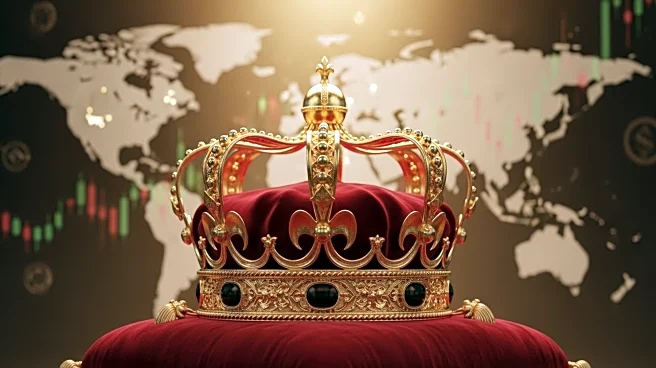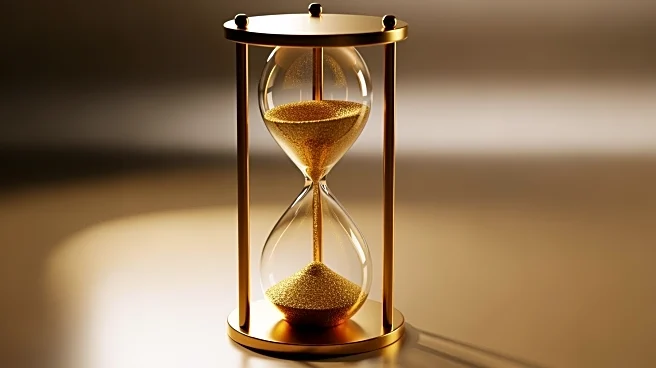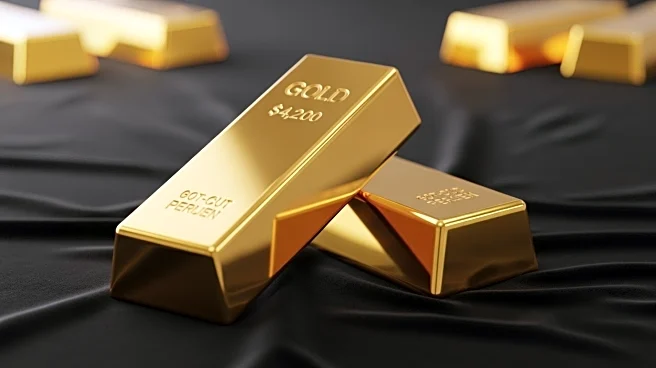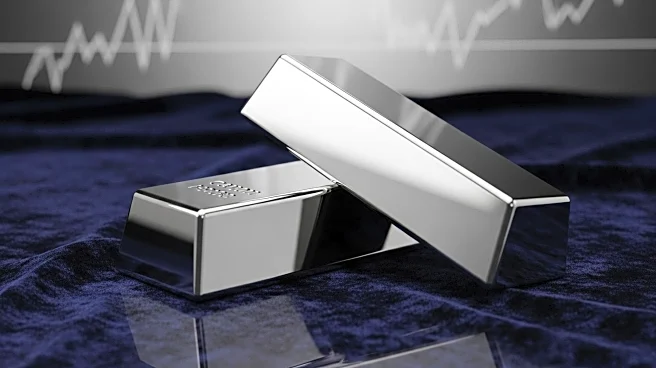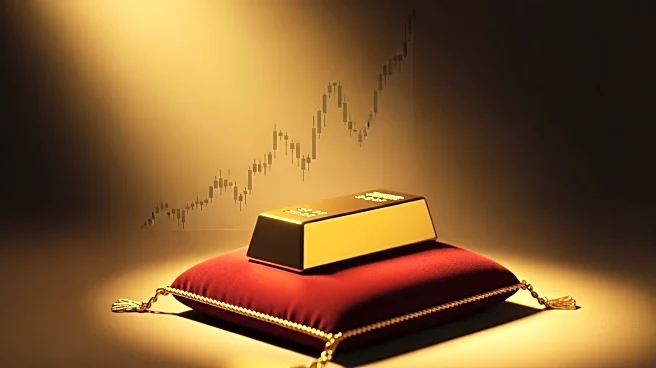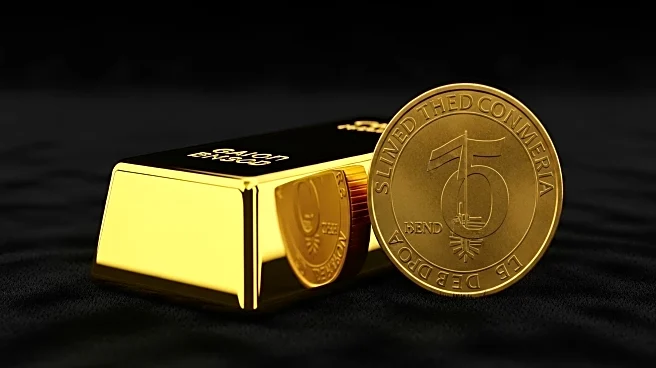What's Happening?
Gold prices have surged past $4,300 an ounce, marking the biggest weekly gain since December 2008. This increase is driven by geopolitical and economic uncertainties, alongside growing expectations for
U.S. rate cuts. Spot gold rose 0.2% to $4,332.17 per ounce, with U.S. gold futures for December delivery jumping 1% to $4,345.90. The metal is set for an 8% gain this week, influenced by factors such as geopolitical risks, central bank buying, and robust exchange-traded-fund inflows. The U.S. Federal Reserve is expected to cut rates by 25 basis points at its upcoming meeting, further supporting gold's rise.
Why It's Important?
The surge in gold prices reflects investor sentiment amid global economic uncertainties, including geopolitical tensions and banking concerns. As a traditional hedge against inflation and uncertainty, gold's rise indicates a shift in investor preference towards safe-haven assets. This trend could impact U.S. financial markets, influencing investment strategies and economic forecasts. The potential rate cuts by the Federal Reserve may further bolster gold prices, affecting currency valuations and international trade dynamics.
What's Next?
Investors are closely watching the Federal Reserve's upcoming meeting for potential rate cuts, which could further influence gold prices. Additionally, geopolitical developments, such as U.S.-China trade tensions and banking sector stress, may continue to drive demand for gold. Market analysts are predicting further price increases, with HSBC projecting gold to reach $5,000 an ounce by 2026.
Beyond the Headlines
The rise in gold prices highlights broader economic shifts, including de-dollarization and increased central bank purchases. These trends may signal long-term changes in global financial systems, with potential implications for U.S. economic policy and international relations.
